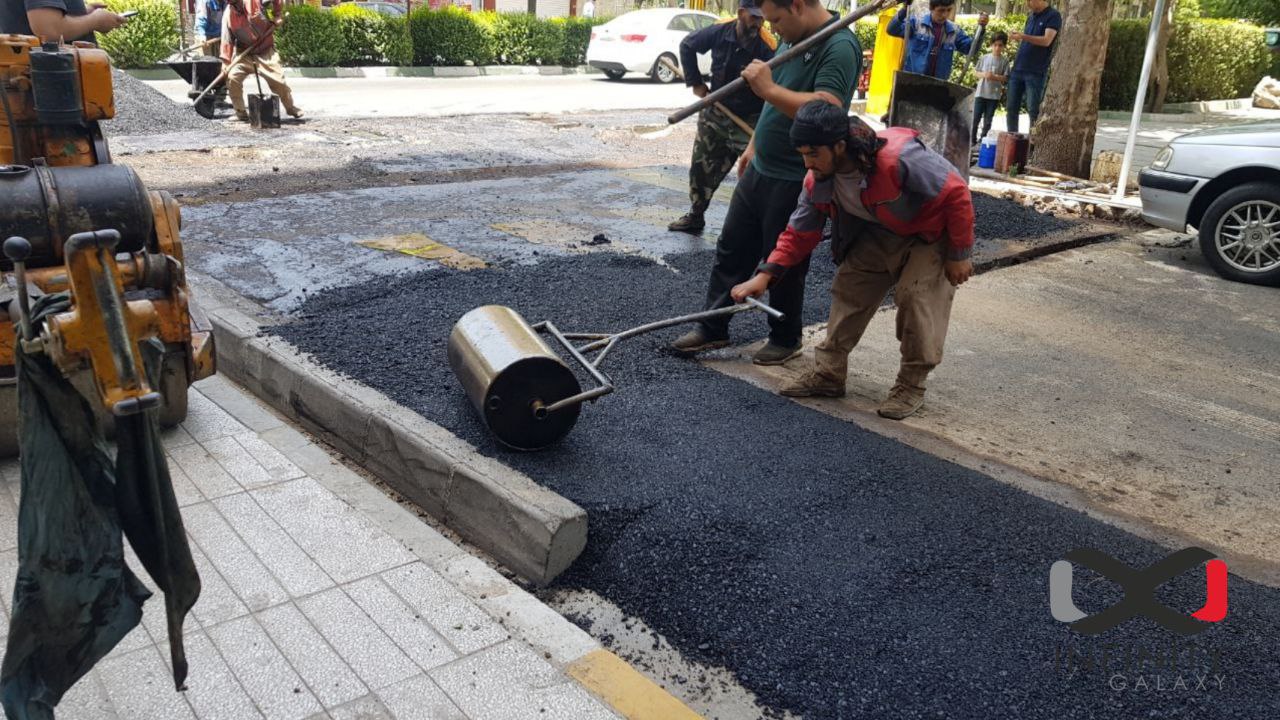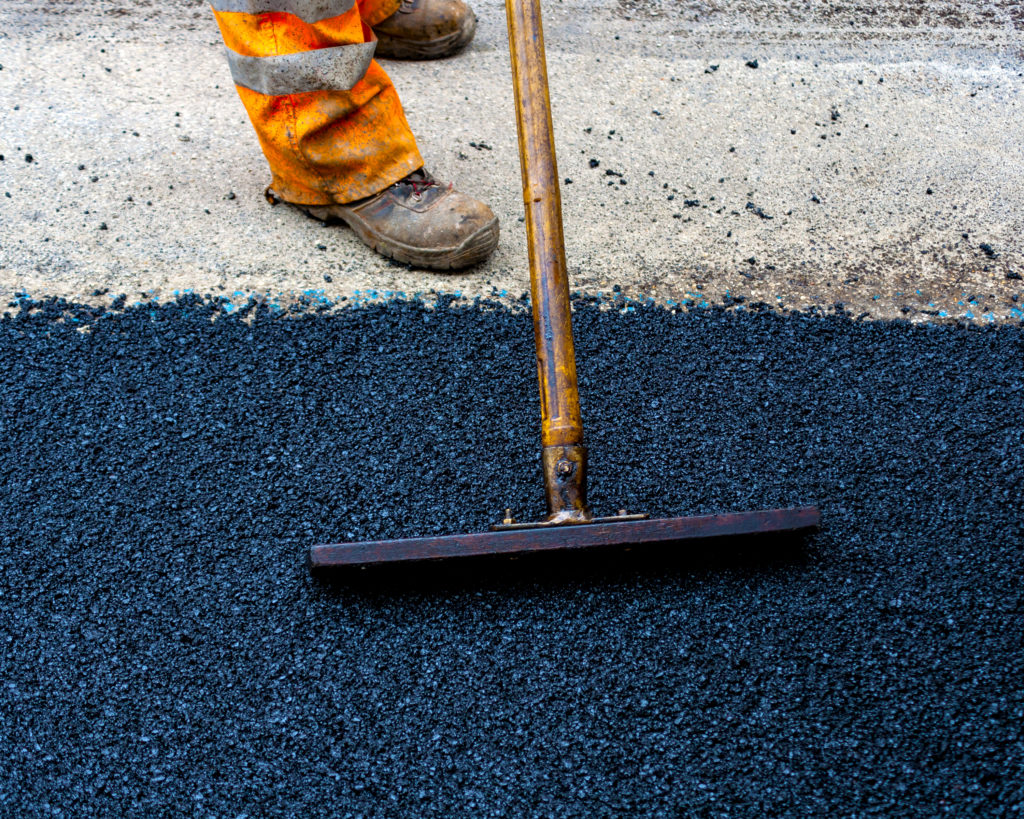Hot Mix Asphalt Paving: Your Entrance to Premium Angled Parking Solutions
Hot Mix Asphalt Paving: Your Entrance to Premium Angled Parking Solutions
Blog Article
Opening the Keys of Warm Mix Asphalt Modern Technology
Discovering the midsts of warm mix asphalt modern technology reveals a globe where precise processes and accurate formulas merge to form our roadways and framework. The blend of accumulations, fillers, and binders isn't simply a building task however a critical orchestration of durability and efficiency. As we peer into the complex dancing of elements, a tapestry of resilience and sustainability unfolds. Yet what exists under this surface of asphaltic proficiency, and what keys wait to be revealed in the realm of paving innovations?
Value of Warm Mix Asphalt
Warm Mix Asphalt plays an important function in modern facilities growth due to its longevity and cost-effectiveness. As the most frequently used paving product for roadways, highways, and car park, Hot Mix Asphalt uses a range of benefits that contribute to its relevance in construction jobs. One crucial benefit is its ability to endure hefty website traffic loads and severe weather, providing a reliable and lasting surface for transport networks. In Addition, Warm Mix Asphalt is cost-effective in both initial construction and long-lasting maintenance, making it a favored option for lots of framework tasks.
The resilience of Hot Mix Asphalt stems from its make-up, which includes aggregates, binder, and filler materials that are thoroughly chosen and mixed to fulfill certain performance requirements. On the whole, the value of Hot Mix Asphalt in framework advancement can not be understated, as it proceeds to be a cornerstone of modern-day building practices.
Elements of Asphalt Mixes
The make-up of asphalt blends is composed of thoroughly chosen accumulations, binder, and filler products that are critical for achieving particular performance demands. Aggregates are the main element of asphalt blends, supplying toughness and security. The binder, commonly asphalt or asphalt concrete, holds the accumulations with each other and gives adaptability and durability to the mix.
The combination and proportion of these parts play a significant duty in determining the top quality and efficiency of the asphalt mix. Designers very carefully create the mix to satisfy certain demands, thinking about elements like traffic volume, environment problems, and sidewalk life expectancy. Appropriate selection and balancing of accumulations, binder, and fillers are crucial for creating sturdy, durable asphalt sidewalks.
Combining and Production Methods

As soon as the accumulations are chosen, the binder, commonly asphalt concrete, is included in additional info bind the materials together. The binder's quality and quantity significantly influence the mix's resistance, stamina, and versatility to ecological aspects. Furthermore, fillers like hydrated lime or Rose city concrete may be incorporated to boost certain qualities of the asphalt mix, such as its workability or moisture resistance.
Throughout manufacturing, the aggregates and binder are warmed, normally between 250-325 ° F(121-163 ° C ), to facilitate blending and make sure proper coating of the accumulations. The mixing procedure needs to be comprehensive to attain an uniform mixture that advertises the preferred performance characteristics of the asphalt. Numerous methods, such as batch blending or drum mixing, are used to accomplish high-quality and constant asphalt blends for building and construction projects.
Variables Impacting Asphalt Efficiency
Elements affecting asphalt performance include a series of variables that affect the durability, durability, and total high quality of asphalt sidewalks. One key aspect is the quality of materials made use of in the asphalt mix. The type and source of accumulations, the binder top quality, and the additives all play a considerable duty in identifying the efficiency of the asphalt sidewalk. The gradation of aggregates is critical as it affects the mix's security, workability, and resistance to fracturing and rutting.

Design considerations, such as pavement thickness and drainage, are vital in making sure the lasting efficiency you could try these out of the asphalt sidewalk. By meticulously considering these designers, specialists and elements can enhance asphalt performance and enhance the solution life of sidewalks.
Sustainable Practices in Asphalt Technology

In addition, the advancement of warm-mix asphalt (WMA) innovations has gained grip recently. WMA permits the manufacturing and placement of asphalt mixes at reduced temperatures contrasted to typical hot-mix asphalt, leading to reduced power usage and greenhouse gas emissions. In addition, the use of permeable asphalt blends can help minimize stormwater overflow issues by enabling water to infiltrate via the pavement and right into the ground, promoting all-natural water filtration and reenergize processes. By carrying out these sustainable methods, the asphalt sector can add to constructing a much more eco friendly and durable infrastructure network.
Conclusion
To conclude, warm mix asphalt modern technology plays a crucial role in modern infrastructure development because of its sturdiness and cost-effectiveness. By meticulously stabilizing elements, utilizing appropriate mixing methods, and thinking about various elements, engineers can create top quality asphalt mixes that withstand rush hour their website loads and harsh climate condition. Welcoming lasting methods, such as utilizing recycled materials and warm-mix technologies, further boosts the ecological friendliness of asphalt technology.
Blending and production techniques in warm mix asphalt innovation involve the specific mix and processing of aggregates, binder, and fillers to develop a long lasting and high-performance asphalt mix.Aspects influencing asphalt efficiency encompass an array of variables that affect the resilience, long life, and general quality of asphalt sidewalks. Sustainable methods in asphalt technology include various efforts aimed at minimizing the environmental influence of asphalt production and paving procedures. By incorporating recovered asphalt pavement (RAP) and recycled asphalt roof shingles (RAS) right into new asphalt blends, the industry can dramatically decrease the intake of raw materials and energy, while additionally reducing land fill waste.
WMA allows for the manufacturing and positioning of asphalt mixes at reduced temperatures compared to typical hot-mix asphalt, resulting in decreased power intake and greenhouse gas emissions.
Report this page